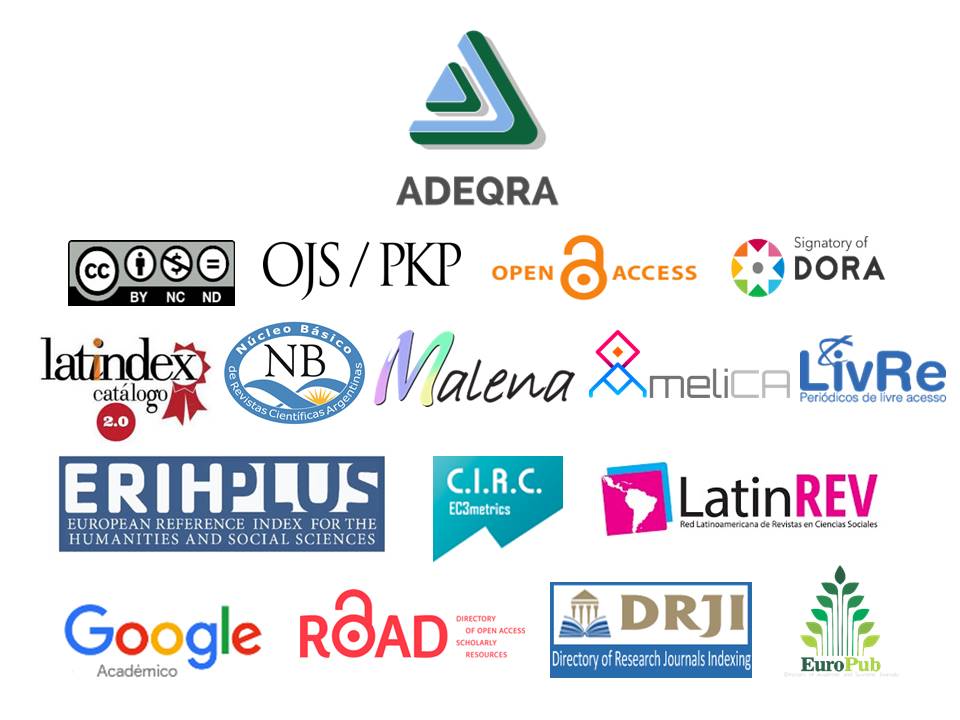Let’s play periodic table
Keywords:
periodic law, motivation, games for teaching, periodic tableAbstract
Teachers, philosophers and researchers in Chemistry Education agree that the periodic law is a fundamental topic in Chemistry teaching though students experience difficulties to learn it. Looking for strategies and resources that motivate our students while allowing them to build knowledge, is a complex but creative and required task. Use of games promotes favourable attitudes towards learning the periodic table. We present two experiences about the implementation of two versions of a board game that represent the periodic law in unusual ways. Different ways of assessing the experiences included first author´s reflection on her own practice, non-participative observations, analysis of students’ production and students´ evaluation of the game. Results showed both games favoured conceptualization of different aspects of periodic table nature and its applications while motivating learning.
References
Bensaude-Vincent, B. (2001). Graphic representations of the periodic system of chemical elements. En: U. Klein (ed.), Tools and Modes of Representation in the Laboratory Sciences (pp. 133-161). Kluwer Academic Publishers: Dordrecht, Holanda.
Carabelli, P. y Farré, A. S. (2016). Juguemos a la tabla periódica: Recuperando lo lúdico para enseñar Química. Jornadas Pedagógicas. Los educadores como productores de conocimiento pedagógico. Problemáticas y desafíos comunes en el contexto actual. Instituto de Formación Docente. San Carlos de Bariloche, Río Negro.
Chamizo, J. A. (2011). La imagen pública de la química.Educación química, 22(4) 320-331. Recuperado el 28 de noviembre de 2017, de http://www.scielo.org.mx/scielo.php?script=sci_arttext&pid=S0187-893X2011000400007&lng=es&tlng=es.
Franco-Mariscal, A. J. Oliva-Martínez, J. M. y Almoraima-Gil, M. L. (2015). Students’ Perceptions about the Use of Educational Games as a Tool for Teaching the Periodic Table of Elements at the High School Level. Journal of Chemical Education, 92(2), 278-285.
Franco-Mariscal, A. J., Oliva-Martínez, J. M. (2012). Dificultades de comprensión de nociones relativas a la clasificación periódica de los elementos químicos: La opinión de profesores e investigadores en educación química. Revista científica, 16(2), 53-71. Recuperado el 28 de noviembre de 2017, de: http://revistas.udistrital.edu.co/ojs/index.php/revcie/issue/view/380
Franco-Mariscal, A. J., Oliva-Martínez, J. M., y Bernal-Márquez, S. (2012a). Una revisión bibliográfica sobre el papel de los juegos didácticos en el estudio de los elementos químicos: Primera parte: los juegos al servicio del conocimiento de la Tabla Periódica. Educación química, 23(3), 338-345. Recuperado el 28 de noviembre de 2017, de http://www.scielo.org.mx/scielo.php?script=sci_arttext&pid=S0187-93X2012000300003&lng=es&tlng=es.
Franco-Mariscal, A. J., Oliva-Martínez, J. M., y Bernal-Márquez, S.(2012b). Una revisión bibliográfica sobre el papel de los juegos didácticos en el estudio de los elementos químicos: Segunda parte: los juegos al servicio de la comprensión y uso de la tabla periódica. Educación química, 23(4), 474-481. Recuperado el 28 de noviembre de 2017, de http://www.scielo.org.mx/scielo.php?script=sci_arttext&pid=S0187-893X2012000400008&lng=es&tlng=es.
Fumagalli, L. (Coord.)(2000). Libro de actividades. Química. Estructura, propiedades y transformaciones de la materia. Ed. Estrada: Buenos Aires.
Galagovsky, L. R. (2004). Del aprendizaje significativo al aprendizaje sustentable Parte 1: Modelo teórico. Enseñanza de las ciencias, 22(2), 229-240. Recuperado el 28 de noviembre de 2017, de http://www.raco.cat/index.php/Ensenanza/issue/view/1823/showToc
Izquierdo-Aymerich, M. y Adúriz-Bravo, A. (2009). Physical Construction of the Chemical Atom: Is it Convenient to Go All the Way Back? Science & Education, 18(3–4), 443–455.
Litwin, E. (2005). De caminos, puentes y atajos: el lugar de la tecnología en la enseñanza. Conferencia Inaugural del II Congreso Iberoamericano de EducaRed “Educación y Nuevas Tecnologías”. Recuperado el 28 de noviembre de 2017, de http://www.saidem.org.ar/docs/Uces2016/Litwin%20E.%20De%20caminos%2C%20puentes%20y%20atajos%20…pdf
Mokiwa, H. O. 2017. Reflections on Teaching Periodic Table Concepts: A Case Study of Selected Schools in South Africa. EURASIA Journal of Mathematics Science and Technology Education, 13(6), 1563-1573. Recuperado el 28 de noviembre de 2017, de http://www.ejmste.com/Issue-6-2017,1787
Scerri, E. (2008). El pasado y el futuro de la tabla periódica: Este fiel símbolo del campo de la química siempre encara el escrutinio y el debate. Educación química, 19(3), 234-241. Recuperado el 28 de noviembre de 2017, de http://www.scielo.org.mx/scielo.php?script=sci_arttext&pid=S0187-893X2008000300012&lng=es&tlng=es.
Soares, M. H. F. (2016). Jogos e atividades lúdicas no ensino de química: Uma discussão teórica necessária para novos avanços. REDEQUIM. Revista Debates em Ensino de Química, 2(2), 5-13. Recuperado el 28 de noviembre de 2017, de http://www.journals.ufrpe.br/index.php/REDEQUIM/article/view/1311
Downloads
Published
How to Cite
Issue
Section
License

This work is licensed under a Creative Commons Attribution-NonCommercial-NoDerivatives 4.0 International License.



